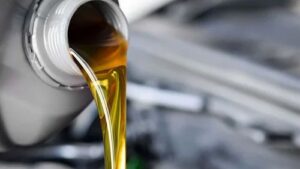Certainly! Below is a detailed description of various types of lubricants, their uses, and technical data presented in a table format using Markdown syntax.
Types of Lubricants
Lubricants are substances used to reduce friction between surfaces in mutual contact, which ultimately reduces the heat generated when the surfaces move. They can be classified into several categories based on their composition and application.
1. Oil-Based Lubricants
- Description: These lubricants are derived from petroleum or synthetic sources. They are commonly used in automotive and industrial applications.
- Uses: Engine oils, hydraulic fluids, gear oils, and general-purpose lubricants.
- Advantages: Excellent lubrication properties, high-temperature stability, and good film strength.
2. Grease
- Description: Grease is a semi-solid lubricant that consists of a base oil, thickener, and additives. It is designed to stay in place and provide long-lasting lubrication.
- Uses: Bearings, gears, and other applications where oil might leak out.
- Advantages: Provides a protective barrier against moisture and contaminants, and can operate under high loads.
3. Dry Lubricants
- Description: These lubricants are typically made from solid materials such as graphite or molybdenum disulfide. They are used in environments where wet lubricants would attract dirt or dust.
- Uses: Locks, hinges, and machinery in dusty environments.
- Advantages: Reduces friction without the mess of liquid lubricants and is effective in high-temperature applications.
4. Water-Based Lubricants
- Description: These lubricants are primarily composed of water and are often used in personal care products.
- Uses: Personal lubricants, cleaning agents, and in some industrial applications.
- Advantages: Non-toxic, easy to clean, and compatible with most materials.
5. Biodegradable Lubricants
- Description: Made from natural sources, these lubricants are designed to break down more easily in the environment.
- Uses: Applications in agriculture, forestry, and marine environments.
- Advantages: Environmentally friendly and reduce pollution.
Technical Data Table
| Type of Lubricant | Composition | Viscosity Range (cSt) | Temperature Range (°C) | Applications | Advantages |
|---|---|---|---|---|---|
| Oil-Based Lubricants | Petroleum/Synthetic | 5 – 1000 | -40 to 150 | Engines, hydraulics, gears | High film strength, thermal stability |
| Grease | Oil + Thickener | N/A | -20 to 200 | Bearings, gears | Long-lasting, moisture barrier |
| Dry Lubricants | Solid materials | N/A | -50 to 400 | Locks, machinery | Clean, high-temperature performance |
| Water-Based Lubricants | Water + Additives | N/A | 0 to 60 | Personal care, cleaning | Non-toxic, easy to clean |
| Biodegradable Lubricants | Natural oils | 10 – 100 | -20 to 100 | Agriculture, marine | Eco-friendly, reduces pollution |
Summary
Choosing the right lubricant is crucial for the efficiency and longevity of machinery and equipment. Each type of lubricant has its unique properties and applications, making it essential to select the appropriate one based on the specific requirements of the task at hand. Whether for industrial use or personal care, understanding the characteristics of each lubricant type can lead to better performance and reduced maintenance costs.

